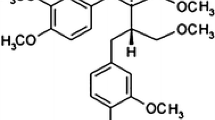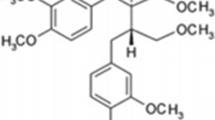Abstract
Silymarin, a mixture of bioactive flavonolignans from the milk thistle (Silybum marianum), is traditionally used in herbal medicine to defend against various hepatotoxic agents. The aim of the present study was to evaluate the protective effect of silymarin against carbon tetrachloride (CCl4)-induced liver injury in fish. Common carp, with an average initial weight of 17.0 ± 1.1 g, were fed diet containing four doses of silymarin (0, 0.1, 0.5, and 1 g/kg diet) for 60 d. Fish were then given an intraperitoneal injection of CCl4 (30% in arachis oil) at a dose of 0.5 ml/kg body weight. At 72 h after CCl4 injection, blood and liver samples were collected for the analyses of serum biochemical parameters, liver index, peroxidation product, glutathione, and antioxidant enzyme activities. The results showed that administration of silymarin at 0.5 and 1 g/kg diet for 60 d prior to CCl4 intoxication significantly reduced the elevated activities of glutamate pyruvate transaminase, glutamate oxalate transaminase, lactate dehydrogenase (LDH), and increased the reduced levels of total protein and albumin in the serum. The reduced levels of liver index, superoxide dismutase, glutathione peroxidase, catalase, glutathione, and total antioxidant capacity were markedly increased, and malondialdehyde formation was significantly restrained in the liver. However, these parameters, except LDH, were not significantly changed in fish fed with silymarin at 0.1 g/kg diet. Based on the results, it can be concluded that silymarin has protective effect against CCl4-induced hepatotoxicity in fish. It is suggested that silymarin may be used as a hepatoprotective agent to prevent liver diseases in fish.

Similar content being viewed by others
References
Aebi H. Catalase in vitro. Methods Enzymol. 105: 121–126; 1984.
Ahmadi K.; Vosoughi Abdolrahim M. A.; Ataee M. B.; Banaee M. The effects of milk thistle-extract (Silybum mariamum) as medical herbal on non-specific immune system of rainbow trout (Oncorhynchus mykiss). Mar. Biol. 2: 19–26; 2010.
Ahsan R.; Islam K. M.; Musaddik A.; Haque E. Hepatoprotective activity of methanol extract of some medicinal plants against carbon tetrachloride induced hepatotoxicity in albino rats. Glob. J. Pharm. 3: 116–122; 2009.
Arnold H.; Pluta H. J.; Braunbeck T. Sublethal effects of prolonged exposure to disulfoton in rainbow trout (Oncorhynchus mykiss): Cytological alterations in the liver by a potent acetylcholine esterase inhibitor. Ecotoxicol. Environ. Saf. 34: 43–55; 1996.
Banaee M.; Sureda A.; Mirvaghefi A.; Rafei G. Effects of long-term silymarin oral supplementation on the blood biochemical profile of rainbow trout (Oncorhynchus mykiss). Fish Physiol. Biochem. 37: 885–896; 2011.
Benzie I. F. F.; Strain J. The ferric reducing ability of plasma (FRAP) as a measure of “antioxidant power”: The FRAP assay. Anal. Biochem. 239: 70–76; 1996.
Bleibel W.; Kim S.; D'Silva K.; Lemmer E. R. Drug-induced liver injury: Review article. Dig. Dis. Sci. 52: 2463–2471; 2007.
Bradford M. M. A rapid and sensitive method for the quantification of microgram quantities of protein utilizing the principle of protein-dye binding. Anal. Biochem. 72: 248–254; 1976.
Clawson G. A.; MacDonald J. R.; Woo C. Early hypomethylation of 2'-O-ribose moieties in hepatocyte cytoplasmic ribosomal RNA underlies the protein synthetic defect produced by CCl4. J. Cell Biol. 105: 705–711; 1987.
El-Kamary S. S.; Shardell M. D.; Abdel-Hamid M.; Ismail S.; El-Ateek M.; Metwally M.; Mikhail N.; Hashem M.; Mousa A.; Aboul-Fotouh A. A randomized controlled trial to assess the safety and efficacy of silymarin on symptoms, signs and biomarkers of acute hepatitis. Phytomedicine 16: 391–400; 2009.
Hattori T.; Ito M.; Suzuki Y. Studies on antinephritic effects of plant components in rats (1). Effects of saikosaponins original-type anti-GBM nephritis in rats and its mechanisms. Nippon. Yakurigaku Zasshi 97: 13–21; 1991.
Hicks S. J.; Drysdale J.; Munro H. Preferential synthesis of ferritin and albumin by different populations of liver polysomes. Science 164: 584–585; 1969.
Huo H. Z.; Wang B.; Liang Y. K.; Bao Y. Y.; Gu Y. Hepatoprotective and antioxidant effects of licorice extract against CCl4-induced oxidative damage in rats. Int. J. Mol. Sci. 12: 6529–6543; 2011.
Ip S. P.; Ko K. M. The crucial antioxidant action of schisandrin B in protecting against carbon tetrachloride hepatotoxicity in mice: A comparative study with butylated hydroxytoluene. Biochem. Pharmacol. 52: 1687–1693; 1996.
Jia R.; Cao L.; Xu P.; Jeney G.; Yin G. In vitro and in vivo hepatoprotective and antioxidant effects of Astragalus polysaccharides against carbon tetrachloride-induced hepatocyte damage in common carp (Cyprinus carpio). Fish Physiol. Biochem. 38: 871–881; 2012.
Kim S. H.; Cheon H. J.; Yun N.; Oh S. T.; Shin E.; Shim K. S.; Lee S. M. Protective effect of a mixture of Aloe vera and Silybum marianum against carbon tetrachloride-induced acute hepatotoxicity and liver fibrosis. J. Pharm. Sci. 109: 119–127; 2009.
Krithika R.; Verma R. J. Ameliorative potential of Phyllanthus amarus against carbon tetrachloride-induced hepatotoxicity. Acta Pol. Pharm. 66: 579–583; 2009.
Lee C. Y.; Peng W. H.; Cheng H. Y.; Chen F. N.; Lai M. T.; Chiu T. H. Hepatoprotective effect of Phyllanthus in Taiwan on acute liver damage induced by carbon tetrachloride. Am. J. Chin. Med. 34: 471–482; 2006.
Lee K.; Choi J.; Jeong H. Hepatoprotective and antioxidant effects of the coffee diterpenes kahweol and cafestol on carbon tetrachloride-induced liver damage in mice. Food Chem. Toxicol. 45: 2118–2125; 2007.
Levine S. A.; Reinhardt J. H. Biochemical-pathology initiated by free radicals, oxidant chemicals, and therapeutic drugs in the etiology of chemical hypersensitivity disease. J. Orthomol. Psychiatry 12: 166–183; 1983.
Lieber C. S.; Leo M. A.; Cao Q.; Ren C.; DeCarli L. M. Silymarin retards the progression of alcohol-induced hepatic fibrosis in baboons. J. Clin. Gastroenterol. 37: 336; 2003.
Liu Q.; Tan Q.; Chen X.; Du Y.; Xia J.; Yang Q.; Ma Y. Changes of biochemical characteristics and organization structure in liver of grass carp (Ctenopharyngodon idellus) with hepatobiliary syndrome. J. Anhui Agri. Sci. 37: 6463–6467; 2009.
Lora J.; Alonso F. J.; Segura J. A.; Lobo C.; Márquez J.; Matés J. M. Antisense glutaminase inhibition decreases glutathione antioxidant capacity and increases apoptosis in Ehrlich ascitic tumour cells. Eur. J. Biochem. 271: 4298–4306; 2004.
Luper S. A review of plants used in the treatment of liver disease: Part 1. Altern. Med. Rev. 3: 410–421; 1998.
Maellaro E.; Casini A. F.; Del Bello B.; Comporti M. Lipid peroxidation and antioxidant systems in the liver injury produced by glutathione depleting agents. Biochem. Pharmacol. 39: 1513–1521; 1990.
Manibusan M. K.; Odin M.; Eastmond D. A. Postulated carbon tetrachloride mode of action: A review. J. Environ. Sci. Heal. C 25: 185–209; 2007.
Mansour M. A. Protective effects of thymoquinone and desferrioxamine against hepatotoxicity of carbon tetrachloride in mice. Life Sci. 66: 2583–2591; 2000.
Martinez-Alvarez R. M.; Morales A. E.; Sanz A. Antioxidant defenses in fish: Biotic and abiotic factors. Rev. Fish Biol. Fish 15: 75–88; 2005.
Mousson B.; Desjacques P.; Baltassat P. Measurement of xanthine oxidase activity in some human tissues. An optimized method. Enzyme 29: 32–43; 1983.
Moutou K.; Braunbeck T.; Houlihan D. Quantitative analysis of alterations in liver ultrastructure of rainbow trout Oncorhynchus mykiss after administration of the aquaculture antibacterials oxolinic acid and flumequine. Dis. Aquat. Org. 29: 21–34; 1997.
Muriel P.; Mourelle M. Prevention by silymarin of membrane alterations in acute CCI4 liver damage. J. Appl. Toxicol. 10: 275–279; 1990.
Ohkawa H.; Ohishi N.; Yagi K. Assay for lipid peroxides in animal tissues by thiobarbituric acid reaction. Anal. Biochem. 95: 351–358; 1979.
Ozden S.; Catalgol B.; Gezginci-Oktayoglu S.; Arda-Pirincci P.; Bolkent S.; Alpertunga B. Methiocarb-induced oxidative damage following subacute exposure and the protective effects of vitamin E and taurine in rats. Food Chem. Toxicol. 47: 1676–1684; 2009.
Peskin A. V.; Winterbourn C. C. A microtiter plate assay for superoxide dismutase using a water-soluble tetrazolium salt (WST-1). Clin. Chim. Acta 293: 157–166; 2000.
Pfeifer K. F.; Weber L. J. The effect of carbon tetrachloride on the total plasma protein concentration of rainbow trout, Salmo gairdneri. Comp. Biochem. Phys. C 64: 37–42; 1979.
Post-White J.; Ladas E. J.; Kelly K. M. Advances in the use of milk thistle (Silybum marianum). Integr. Cancer Ther. 6: 104–109; 2007.
Pradhan S.; Girish C. Hepatoprotective herbal drug, silymarin from experimental pharmacology to clinical medicine. Indian J. Med. Res. 124: 491; 2006.
Rechnagel R. O.; Glende Jr. E. Carbon tetrachloride hepatotoxicity: An example of lethal cleavage. CRC Crit. Rev. Toxicol. 2: 263; 1973.
Rothschild M. A.; Oratz M.; Schreiber S. S. Effects of carbon tetrachloride on albumin synthesis. J. Clin. Invest. 51: 2310–2314; 1972.
Rotruck J.; Pope A.; Ganther H.; Swanson A.; Hafeman D.; Hoekstra W. Selenium: Biochemical role as a component of glutathione peroxidase. Science 179: 588–590; 1973.
Shiau R. J.; Shih P. C.; Wen Y. D. Effect of silymarin on curcumin-induced mortality in zebrafish (Danio rerio) embryos and larvae. Indian J. Exp. Biol. 49: 491–497; 2011.
Škottová N.; Krečman V.; Šimánek V. Activities of silymarin and its flavonolignans upon low density lipoprotein oxidizability in vitro. Phytother. Res. 13: 535–537; 1999.
Smuckler E. A.; Benditt E. P. Studies on carbon tetrachloride intoxication. III. A subcellular defect in protein synthesis. Biochemistry 4: 671–679; 1965.
Thiim M.; Friedman L. S. Hepatotoxicity of antibiotics and antifungals. Clin. Liver Dis. 7: 381–399; 2003.
Van de Straat R.; De Vries J.; Debets A.; Vermeulen N. The mechanism of prevention of paracetamol-induced hepatotoxicity by 3, 5-dialkyl substitution: The roles of glutathione depletion and oxidative stress. Biochem. Pharmacol. 36: 2065–2070; 1987.
Visen P.; Saraswat B.; Dhawan B. Curative effect of picroliv on primary cultured rat hepatocytes against different hepatotoxins: An in vitro study. J. Pharmacol. Toxicol. Methods 40: 173–179; 1998.
Wang B.-E. Treatment of chronic liver diseases with traditional Chinese medicine. J. Gastroenterol. Hepatol. 15: E67–E70; 2000.
Wang H. H.; Hung T. M.; Wei J.; Chiang A. N. Fish oil increases antioxidant enzyme activities in macrophages and reduces atherosclerotic lesions in apoE-knockout mice. Cardiovasc. Res. 61: 169–176; 2004.
Wu Y.; Wang F.; Zheng Q.; Lu L.; Yao H.; Zhou C.; Wu X.; Zhao Y. Hepatoprotective effect of total flavonoids from Laggera alata against carbon tetrachloride-induced injury in primary cultured neonatal rat hepatocytes and in rats with hepatic damage. J. Biomed. Sci. 13: 569–578; 2006.
Yang J.; Li Y.; Wang F.; Wu C. Hepatoprotective effects of apple polyphenols on CCl4-induced acute liver damage in mice. J. Agric. Food Chem. 58: 6525–6531; 2010.
Yin G.; Cao L.; Cao L.; Xu P.; Jeney G.; Nakao M.; Lu C. Hepatoprotective and antioxidant effects of Glycyrrhiza glabra extract against carbon tetrachloride (CCl4)-induced hepatocyte damage in common carp (Cyprinus carpio). Fish Physiol. Biochem. 37: 209–216; 2011.
Zeng T.; Zhang C. L.; Pan G. B.; Zhao S.; Dou D. D.; Xin X.; Xie K. Q. The protective effects of garlic oil on acute ethanol-induced oxidative stress in the liver of mice. J. Sci. Food Agric. 88: 2238–2243; 2008.
Acknowledgments
This study was funded by Ministry of Science and Technology of the People's Republic of China (2009DFA32620), Wuxi Municipal Bureau on Science and Technology (CZE00906), and Jiangsu Science and Technology Department (BK2012535).
Author information
Authors and Affiliations
Corresponding author
Additional information
Editor: T. Okamoto
Rights and permissions
About this article
Cite this article
Jia, R., Cao, L., Du, J. et al. The protective effect of silymarin on the carbon tetrachloride (CCl4)-induced liver injury in common carp (Cyprinus carpio). In Vitro Cell.Dev.Biol.-Animal 49, 155–161 (2013). https://doi.org/10.1007/s11626-013-9587-3
Received:
Accepted:
Published:
Issue Date:
DOI: https://doi.org/10.1007/s11626-013-9587-3




